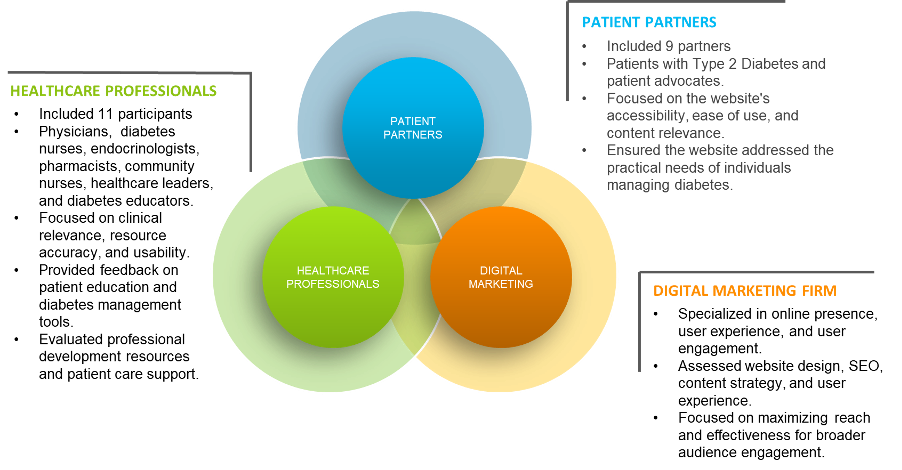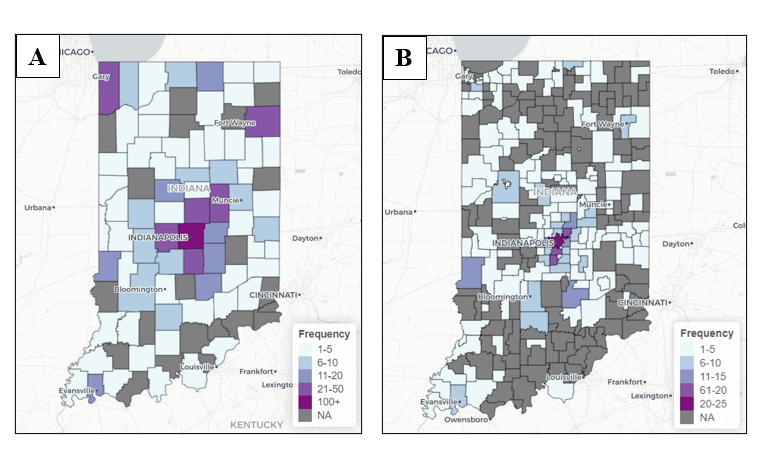
Designing a Centralized Digital Platform to Support Type 2 Diabetes: From Idea to Implementation
by Koning
C.,
Lock
A.,
Tice
S.,
Madani Civi
R.,
Smith Griffiths
E.,
Chouinor
K.
Summary: This early-phase digital initiative aimed to develop a centralized, user-friendly digital platform that aggregates resources for Type 2 Diabetes Mellitus (T2DM) self-management in British Columbia, Canada. The goal was to synthesize effective strategies from the literature to create an accessible resource for both patients and healthcare providers, thereby improving access to high-quality, publicly available T2DM educational materials.

Evaluation of hospital-based educational supports in the outpatient setting
by Curtin
M.,
Reisinger
D.,
Thibodaux
L.,
Wikel
K.
Summary: Children and youth with special healthcare needs (CYSHCN) in the United States face elevated stress from managing complicated treatment regimens with school outcomes that are generally worse compared to peers. As medical care is evolving towards increasing outpatient service delivery and decreasing hospital stays, CYSHCN have limited access to inpatient educational supports. Our team aims to describe the services in the expansion of a traditional inpatient Hospital-Based School Program (HBSP) to serve outpatient hematology/oncology, pulmonology, and dialysis clinics.

Assessment of ‘Florence’ in Addressing Inquiries on Nicotine Replacement Therapy
by Billah
M.,
Amin
S.,
Barua
O.
Summary: Dear editor,

Artificial Intelligence in Medicine: Revolutionizing Healthcare for Improved Patient Outcomes
by Mehta
V.
Summary: Artificial intelligence (AI) has emerged as a groundbreaking technology with the potential to transform various sectors, and the field of medicine is no exception. With its ability to process vast amounts of data and perform complex tasks, AI has begun to revolutionize healthcare, offering promising avenues for diagnosis, treatment, and patient care. In this editorial article, we will explore the significant impact of AI in medicine, highlighting its potential benefits and the challenges that lie ahead.

Low back pain oswestry disability index changes following 8-week movement proficiency exercise program – A retrospective cohort study
by Williams
B.,
Johnson
D.
Summary: Chronic low back pain (CLBP) is a worldwide epidemic, with a prevalence rate of 75–84% in developed countries. With the prevalence increasing, health-care professionals must question current best practice guidelines. In 2014, spinal neurosurgeon and back pain rehabilitation specialist Dr. David Johnson developed a unique back pain rehabilitation program referred to as NearoHAB®. The program’s uniqueness is founded on the principle that effective rehabilitation must eliminate the root cause of pain symptoms. The NeuroHAB® 8-week Movement therapy program aims to reverse movement dysfunction by restoring central nervous system-derived motor patterns based on proficient spinopelvic biomechanics for bending activities of daily living. To date, no other rehabilitation methodology adopts a movement dysfunction cause-based clinical model for back pain symptoms or includes a framework for what healthy lumbar pelvic movement should resemble. Over the course of the 8-week program, each participant is gradually upskilled, developing new default movement proficiency and improved biomechanics, in efforts to downregulate pain, improve disability, and increase functional movement capacity, creating a positive feedback loop for further progress. The leading question of this study is “How does functional movement-based therapy impact chronic low back pain?” Ten sets of participant details were selected at random and retrieved from the NeuroHAB® 8-week program database of 2020. All participants presented with CLBP, and two oswestry disability index (ODI) scores were documented – the first at the beginning of the 8-week program, and the second after the NeuroHAB® intervention. ODI scores were collated and the pre- and post-program results were measured and compared quantitatively through a paired t-test to determine the statistical significance of improvement. Results showed a two-tailed P=0.05 indicating that there was a significant difference between the pre- and post-data (0.0024). The pre- and post-group intervention ODI means were 25.80 and 13.30, respectively, resulting in a difference of 12.50 (95% CI: 5.73–19.27); determining the mean data between the pre- and post-intervention decreased by 48.4496%. The results from this study support the alternative hypothesis, concluding an 8-week intervention of functional movement therapy represented by NeuroHAB® results in a significant reduction of LBP ODI scores.

A novel approach of harvesting concentrated plasma-rich fibrin (PRF) with increased platelet count
by Ragunanthan
N
Devi
C A.,
Hemavani
V
Summary: The study concludes that protocol 1 was more efficient in harvesting platelets with less concentration of leukocytes, which is considered more suitable for various medical applications.
JMRI will start accepting submissions from February 2024
JMRI editorial board had taken a short time off from editorial process in order to focus on clinical field thus declining all submissions. However, from February 2024, we will restart accepting and processing submissions.
Call for editorial board members
The Journal of Medical Research and Innovation is looking for its new editorial board members following the retirement of its current team in next few months.
JMRI Membership
Become a JMRI Member today and submit as many cases as you like and publish it for free within one year.
Call for papers (JMRI)
Any article submitted during May 2023, shall be published for free if accepted.
Update on publication
JMRI will again be published by Medkrux from May 1st, 2023 onwards on its orginal site www.jmrionline.com.
Index Copernicus Value
Index Copernicus Value for 2018 has been increased to 99.05 from 77.03 (2017 value).



